Pork Hocks Slow-braised in Sweet Dark Soy Sauce and Star Anise
I’m convinced that there are spices that can make you high. I can be roaming the streets of Portland, Vancouver, B.C., Hong Kong, Singapore, Thailand, and my hair will start to vibrate and stand on end when I get that first whiff of star anise in the air.
My heartbeat quickens. My sweat glands go into overdrive. I start blinking uncontrollably as my mind disconnects from my body and my feet start searching for the source of the heavenly aroma. Pungent, sweet, savory — I think it’s steamed Chinese dumplings with barbecued pork drenched with five-spice powder (char siu pau) in which star anise is a crucial ingredient. I’m following my nose, threading my way through the crowd and before I know it, I’m standing in front of the source: freshly roasted strips of pork, still marbled with fat, dangling from shiny stainless-steel hooks in a storefront in Chinatown, tinged with that roasted mahogany color and exuding the unmistakable aroma of star anise. A bowl below catches the oil and juices dripping from the pork. At that moment, all I can think of is offering the clerk money and slurping down those drippings.
The aroma and flavor of star anise are unmistakable: licorice. If you’ve ever had the aperitif Pastis in France, star anise is the ingredient that gives the drink its unique flavor. Star anise is also used in the Italian aperitif Galliano. The spice is a native of China and Vietnam — a dried fruit in the shape of an eight-pointed star. Upon close inspection, you can see the oval seed in each dried point of the star. It’s commonly used in eastern Chinese cuisine as an ingredient in slow-braised pork dishes, and it’s the key ingredient that gives Vietnamese Pho soup stock that ethereal flavor and spell-binding aroma. It’s also an ingredient in many Indian curries and the spice mixture garam masala. It has a similar flavor to the unrelated spice anise, commonly used in biscotti, but it’s much more intense and aromatic.
There is a Thai dish of ethnic Chinese origins that uses this spice, a stew of hard-boiled eggs, sweet dark soy sauce and pork hocks, that is flavored with star anise and cinnamon. I could always tell when my mother was making this dish because the aroma of the pork and star anise cooking would inevitably drive occupants of the house to the kitchen in anticipation. The pork hocks simmer in the stew for two and a half hours until they’re practically falling apart, and they’ve completely absorbed the savory flavors of soy and the star anise and cinnamon. Every morsel of tender pork, glistening fat and tender skin has taken on a hint of star anise.
It’s one of my favorite childhood dishes and one that I finally got Mom to teach me to make. We rarely have it, as it’s sometimes difficult to find fresh pork hocks, while smoked pork hocks seem to always be in abundance. The stew doesn’t shine alone on the dinner table. It has a companion — a very capable sauce that uses an entire head of garlic, lime, chili and fish sauce. You just can’t have one without the other. It’s one of those yin and yang pairings: savory sweet pork and bracingly sour and salty sauce…with a bite from all that raw garlic.
Pork Hocks Slow-braised in Sweet Dark Soy Sauce and Star Anise
Serves 6
Ingredients
- 12 cups (1.5 l.) water
- 1 cup (240 ml.) sweet dark soy sauce
- 1 cup (240 ml.) black soy sauce, measured out as two ½-cup (120 ml.) portions to be used in different steps
- 6 sticks of cinnamon
- 1 cup (240 ml.) star anise (use as many whole pods with seeds as possible)
- 1 cup (240 ml.) oil
- 6 fresh pork hocks
- 1 head of garlic, peeled
- 2 red Thai chilis, sliced
- Juice from 1 lime
- 1 tablespoon (15 ml.) fish sauce
- 6 hard-boiled eggs, peeled
- A few springs of cilantro for garnish
- 4 cups (960 ml.) white rice, steamed, to serve with hocks
Method
- Prepare the stock by heating the water in a large stock pot over a high flame. When it comes to a boil, add the sweet dark soy sauce and ½ cup (120 ml.) of the black soy sauce. Stir to completely mix and then add cinnamon sticks and star anise. Reduce heat to a simmer.
- In a wok, heat the oil over a high flame. Carefully add the remaining ½ cup (120 ml.) of black soy sauce and stir.
- Add pork hocks and fry three at a time, turning them every minute. After a total of four minutes, the pork hocks should be glazed a dark brown color from the black soy sauce. Remove the hocks and add them to the stock pot.
- Fry the remaining three hocks, repeating the steps above, and then add to the stock pot.
- Pour all of the remaining oil and liquid from the wok into the stock pot and raise heat to bring to a boil before reducing to simmer.
- Make sure that there’s enough liquid to completely cover the pork hocks. Add more water if necessary or re-arrange pork hocks in stock pot so that they’re completely covered by the liquid.
- Cover with lid and simmer for 2½ hours.
- While the hocks are simmering, prepare the dipping sauce by pounding the garlic in a mortar and pestle until it turns into a fine mash. Add the sliced chilis and pound until incorporated. Add the lime juice and fish sauce and mix thoroughly. Drain into a small serving bowl and set aside.
- Remove the lid from the stock pot and add hard-boiled eggs and simmer for another 15 minutes.
- Turn off the heat and use tongs to remove hocks and eggs to a serving bowl and then ladle the broth over the hocks and eggs.
- Garnish with a few springs of cilantro and serve with the dipping sauce and steamed white rice.
Enjoy!
— Vic
About the Author (Author Profile)
Victor Panichkul is a journalist and writer by training; a cook, wine lover and photographer by passion; and a lover of the outdoors since moving to Oregon more than 10 years ago. He is a native of Bangkok, Thailand.
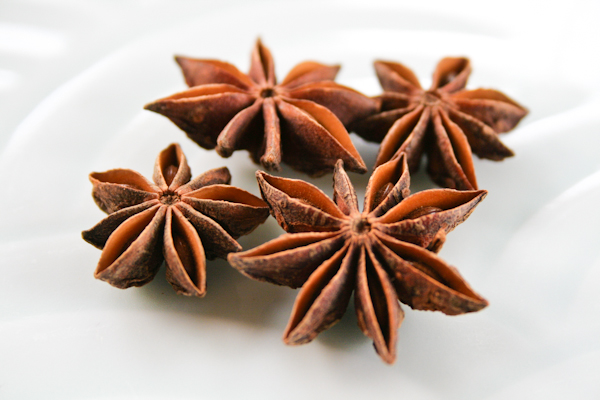

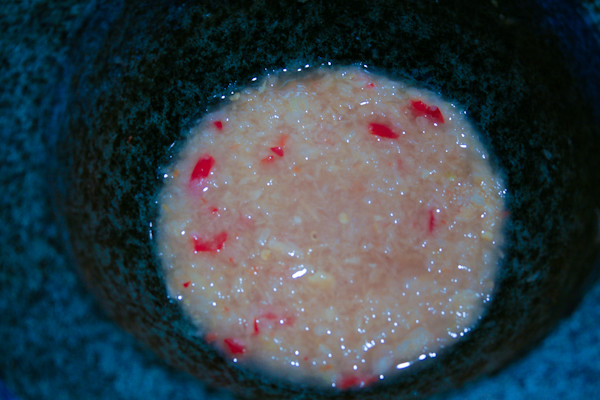












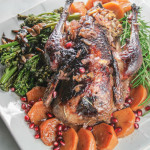

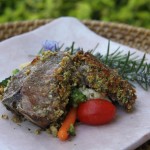







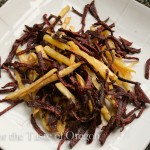







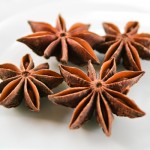

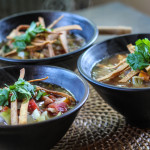
















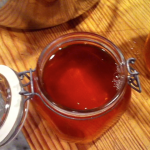











Comfort food Thai style - like eating a surprise. The sauce has ZING and may make you sing if it singes your tongue!
I’m delirious over this. Is that the right word? While reading this I just wanted to run over to your kitchen and sit there while you cooked this. I HAVE to show this recipe to The Chef (my hubby) - it’s right up his alley.
When we walk into Super Pho we always have to stop and take in deep breaths of the fragrant air. I love the smell of star anise, meat, and fish sauce. I’m a Scandinavian who grew up in northern WI, about as far away from decent Asian food as you can get, but to me this kind of food cooking smells like home.
Thanks Pam! I feel the same way when I smell something with star anise cooking in the house. You know, Buddhists would say that your love of Pho could indicate that in a past life you lived in Vietnam?
My family recipe for Chinese tea eggs also stars star anise. Such a great flavor!
We’ve cooked this dish since I was a wee lad. This is the ultimate comfort food for me.
Our fam is Chinese but with lots of SE Asian roots. I saw this recipe and my eyes lit up, I was instantly transported to age 8, sitting in front of the TV ravenously gnawing through hock tendons and watching 21 Jump Street. We don’t put in cinnamon, but I might try that now.
I’ve also adapted this flavor profile to my experimental Carnitas recipe with the inclusion of star annise
Thanks visiting our website and for your comment. I’m glad that you enjoy this dish as much as I do. Mom says that in Thailand they actually use quail eggs with this recipe or duck eggs. Have you ever tried that?